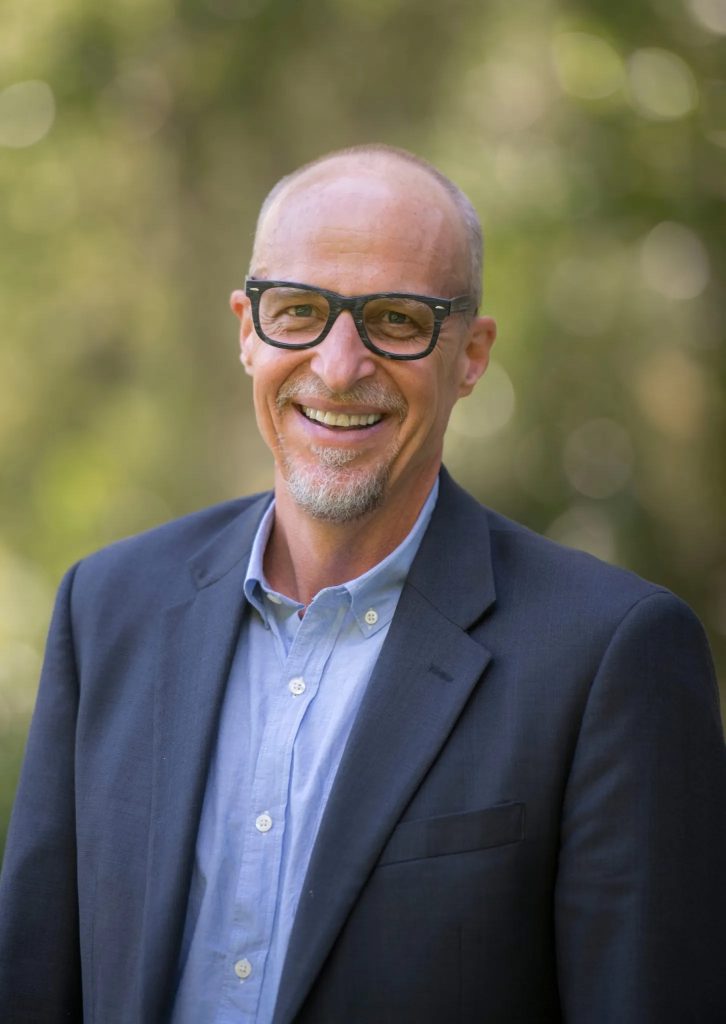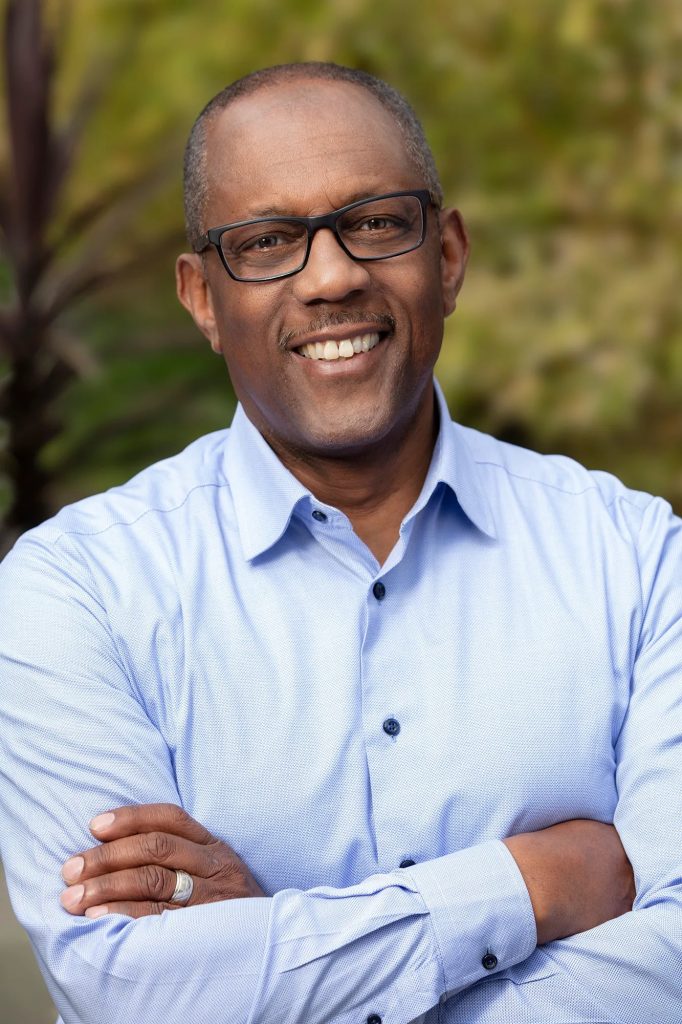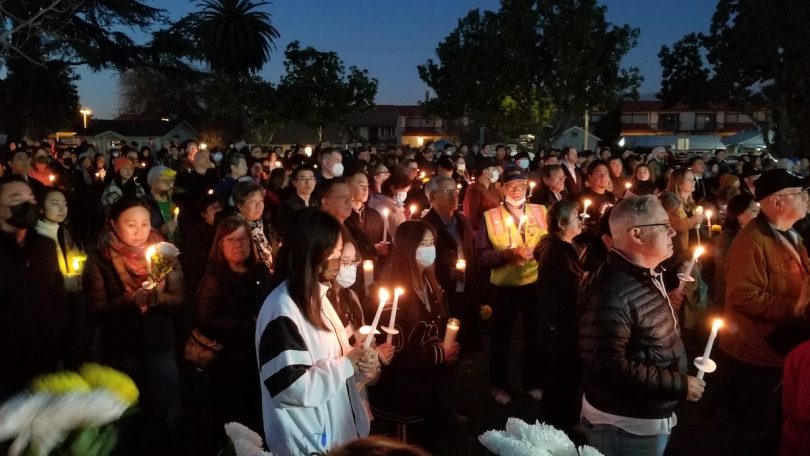By Brian Malte and Chet P. Hewitt for CalMatters
There’s an African proverb that says, “In the moment of crisis, the wise build bridges and the foolish build dams.” As gun violence rates increase across the country, police budgets have risen like dams in the name of prevention and interruption.
To decrease violence in California, research shows that we must instead invest in our communities. We need to build bridges – to job opportunities, to healing, to mental health services, to a sense of shared safety – for true gun violence prevention.
How will California respond after yet another horrific mass shooting – this time in Monterey Park?
Every three minutes in California, someone is killed by a gun. And firearm injuries are the leading cause of death for California youth ages 19 and under, and for youth under 24 nationwide.
This is a public health crisis.
While California gun homicides have increased in the last few years, fueled by a surge in gun sales and reduced community connections and outreach due to COVID, this rise in violence is reversible.
Public funding of prevention, interruption and intervention efforts is crucial to reducing gun violence. It’s most effective, however, when taking a public health approach that integrates community expertise and leadership. This model is a proven, clear path to safety and health equity.
To its credit, California has increased public funding to address gun violence through initiatives like the California Violence Intervention and Prevention Grant Program, or CalVIP. In 2022, the state allocated a record $156 million to the program. This funding supports critical violence reduction initiatives in communities with the highest risk.
Yet CalVIP funding is handled by the California Board of State and Community Corrections, an agency that oversees law enforcement, rather than public health officials. Unfortunately, as we have seen in cities like Stockton and Sacramento where leaders chose to bypass the public health model, giving law enforcement that type of discretion can be deeply antithetical to both the best practices and the intention of prevention funding.
Law enforcement is primarily engaged in intervention by enforcing laws. When law enforcement is used as a preventative force, it is often couched in increased police or probation presence, criminalization and/or prosecution. These practices often have little to do with prevention or aftercare trauma response.
Enshrining community work within law enforcement conflates intervention and prevention. This approach ignores the social and economic drivers of gun violence as well as the impacts of street violence, interpersonal violence and suicides. Gun violence prevention requires extraordinary expertise and understanding that violence stems from chronic conditions of historical oppression, poverty and racism.
Trusted and trained organizations with cultural knowledge that are embedded in communities – in a different light – are best prepared to lead on prevention efforts. This trust and approach must extend to the agencies funding and enabling this work.
So, how do we build opportunity in communities and ensure smart funding of effective gun violence prevention?
- Treat gun violence as a chronic issue and use a public health (social determinants of health) approach rooted in impacted communities.
- Demand prevention efforts at the state and municipal levels are led by agencies with a public health and health equity perspective.
- Remove barriers to communities accessing public funding opportunities so people who are most impacted can lead the efforts.
- Shift policies and budgets to acknowledge law enforcement focuses on investigation and prosecution tactics – not prevention.
- Recognize that strategies to reduce violence must clearly define and understand prevention, intervention and aftercare.
- Ensure entities that facilitate community-based funding and gun violence prevention strategies are housed in public health rather than law enforcement (for example, Los Angeles County’s Office of Violence Prevention is part of the public health department)
These approaches would set a powerful precedent. California would have appropriate tools, finally funded to the scale of the issue, to lead the way in effective, community-owned violence prevention and interruption efforts.
There is no future in funding paradigms that favor law enforcement responses to public health problems. There is one in sufficiently funding communities – and it’s a safe and equitable future. Californians deserve that.

Brian Malte
Brian Malte is the executive director of the Hope and Heal Fund and a nationally recognized leader on gun violence prevention. He helped pass many of California’s most effective gun laws.

Chet P. Hewitt
Chet P. Hewitt is CEO of The Center and the president and CEO of the Sierra Health Foundation.
This article was originally published by CalMatters.


Just great. I would love to agree – and in my heart, truly believe this is the case. HOWEVER – what would really be helpful a definition of the threshold to unequivocally state, based on studies, that that death and injury from gun violence is actually a public health threat or that there is actually a crisis, Are there any studies or comparisons to other jurisdictions or regions that actually spell out a rate at which such violence occurs. Emotionally catastrophizing gun violence doesn’t help. It just scares people which this website is highly adept at doing. Sharing some statistical analysis will really help the public put this into proper perspective (frequency, location, numbers) . Using ill defined words like “crisis” and “public health threat” look good – but is it really true when compared with all of the other ways people die or are injured? If this is really the case, then spell it out with facts.
To the author: Pray tell, what is the definition of a public health crisis? If you have data that demonstrates the rate of handgun-related deaths and injuries per 100,000 population – and perhaps compare to other “health-crisis” related data such as deaths from cancer, AIDS, diabetes, other diseases, car accidents, etc. I think such a definition will really help the reader understand the toll gun violence takes on our communities and put it in proper perspective. I agree that gun violence is a gut-wrenching problem. But if you are going to frame it as a crisis, then support your position with facts – not just your heart.